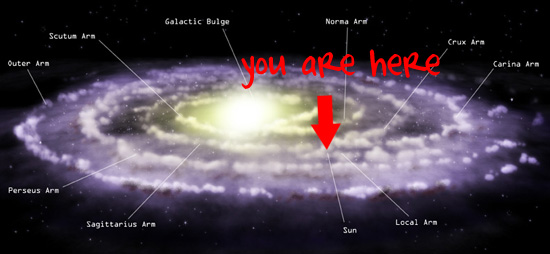
Well ladies and gentlemen, you’d better fasten your seat belts, because we’re in for quite a spin. The Milky Way is spinning a bit faster than scientists believed; with about 100.000 miles / hour that is. What does that mean, basically?? Well, we’re faster, heavier, and there’s a bigger chance that we’ll collide with… something. It won’t be good, anyway.
According to Mark Reid, of the Harvard-Smithsonian Center for Astrophysics, that means that the mass of our galaxy increases with about 50%, which is about as heavy as the Andromeda galaxy is (or as much as we believe it is).
“No longer will we think of the Milky Way as the little sister of the Andromeda Galaxy in our Local Group family.”
To explain this as simple as possible, at this kind of speeds which are relatively close to that of the light, mass increases significantly as the speed increases. As a consequence, the gravitational pull (the attraction force) increases too, meaning the probability of a collision with the Andromeda galaxy or other smaller galaxies increases as well.
The measurements seem to be more precise than anything done before.
“The new VLBA observations of the Milky Way are producing highly-accurate direct measurements of distances and motions,” said Karl Menten of the Max Planck Institute for Radio Astronomy in Germany, a member of the team. “These measurements use the traditional surveyor’s method of triangulation and do not depend on any assumptions based on other properties, such as brightness, unlike earlier studies.”
“These direct measurements are revising our understanding of the structure and motions of our Galaxy,” Menten said. “Because we’re inside it, it’s difficult for us to determine the Milky Way’s structure. For other galaxies, we can simply look at them and see their structure, but we can’t do this to get an overall image of the Milky Way. We have to deduce its structure by measuring and mapping,” he added.






